Museum
Our Japanese Doll Museum stands as a living testament to the beauty and intricacy of Japanese doll-making. Through its extensive collection and immersive experiences, it offers visitors a glimpse into the rich tapestry of Japanese culture, history, and artistry. Whether you're an avid collector, a history enthusiast, or simply someone seeking to immerse yourself in the beauty of Japan's traditions, a visit to this enchanting museum is sure to be a memorable and educational experience.
GALLERY
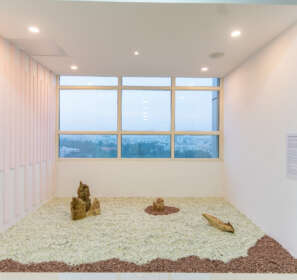
Dry Garden
Karesansui
A thought-provoking small Dry Garden is present in NRJH. It is conceptualized and created with the support of a re-known city and garden developer of international repute FUJIKI san from Osaka, and a Bonsai artist Mrs. Suchitra Reddy from Hyderabad.
The garden depicts the imaginary scene of the blessed souls on a holy journey to
‘SEIHO”, the pure land located in the holy “SHUMISEN” mountains in a rock-shaped boat traveling across the white sea represented by white Gravel. This imaginary scene is considered central to Buddhist and old Hindu thoughts.
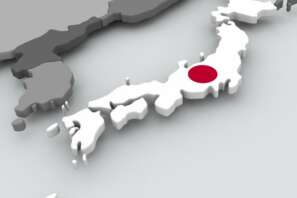
Hino Maru
We are now greeted by the Japan Flag “HINO MARU” (Circle of the sun) and a map of Japan.
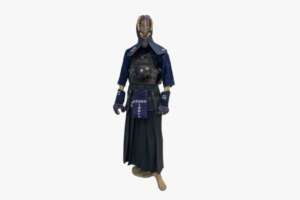
Kendo Mannequin
On the other side, we have a KENDO mannequin greeting us. This is displayed with the support of Dr. Siddiqui from Golden Dragons
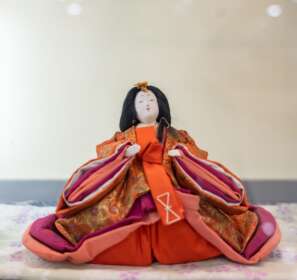
Japanese Dolls and Artifacts
Our Japanese Doll Museum stands as a living testament to the beauty and intricacy of Japanese doll-making. Through its extensive collection and immersive experiences, it offers visitors a glimpse into the rich tapestry of Japanese culture, history, and artistry. Whether you're an avid collector, a history enthusiast, or simply someone seeking to immerse yourself in the beauty of Japan's traditions, a visit to this enchanting museum is sure to be a memorable and educational experience.
- Hina Matsuri: The Festival of Dolls
- Kokeshi Dolls: A Whimsical Folk Art
- Noh and Kabuki: The Art of Performing Dolls
- Modern Japanese Dolls: A Blend of Tradition and Innovati
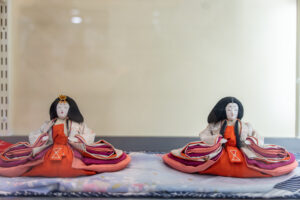
Hina dolls
Hina-matsuri is an annual festival in Japan that takes place on March 3rd. This festival is dedicated to praying for the healthy growth, prosperity, and happiness of girls, especially those aged 10 or younger. During the celebration, families with young girls display a set of exquisite traditional Japanese dolls known as Hina-Ningyo or Hina dolls in their homes. These Hina dolls are believed to protect against evil and misfortune and are displayed as a prayer for the future good health and happy marriages of girls. They symbolize the wedding of the Japanese imperial family

Gogatsu dolls
Tango-no-sekku is an annual festival in Japan that occurs on May 5th, marked by the display of Gogatsu dolls. This festival is also known as "Boys' Festival" or "Children's Day." Gogatsu dolls are Japanese armor, helmet, and/or warrior figurines symbolizing the birth of a boy and a wish for his growth to be strong and healthy. During this celebration, families with young boys hang carp streamers, known as Koinobori, outside their homes, and display Gogatsu dolls inside the house.
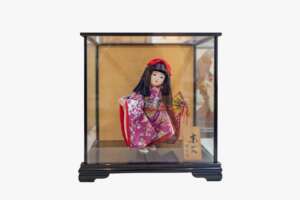
Ichimatsu dolls
Dolls resembling Ichimatsu Sanokawa, a popular kabuki actor of the Edo period, originated from the Edo period. Ichimatsu dolls are generally made to resemble a child around five to six years old. These dolls were traditionally used as dress-up dolls, hope chests, and displayed alongside Hina dolls in the past.
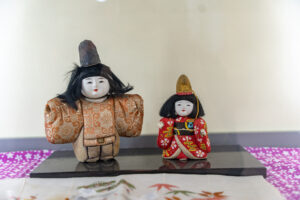
Gosho dolls
Gosho dolls are traditional dolls that have been displayed at various festive occasions at court, such as celebrations, births, and marriages. Gosho dolls are characterized by their large heads and plump figures
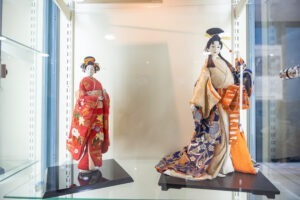
Oyama dolls
Oyama doll is a general term for a female doll. It is believed that the name comes from Jirosaburo Oyama, who skillfully crafted female dolls, but there are many theories, and it is not certain
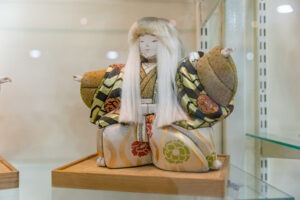
Hakata dolls
Hakata dolls are unglazed dolls made in Hakata (Fukuoka Prefecture). They are characterized by their delicate and rich expressions, detailed carvings, beautiful curves, and subdued colors that make it hard to believe they are unglazed dolls.
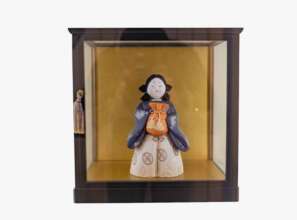
Miyoshi Articles Corner
Miyoshi is a beautiful town in Hiroshima prefecture and Hyderabad and Miyoshi are linked by sister city affiliation since 2006.
Miyoshi city has Japanese doll making centres. The city is known for garbage management. The garbage is segregated in seven different sections and is recycled in most of the cases.
A collection of such articles is displayed here.

Kimono
Kimono is the costume worn by Japanese.
Until world war 2, was worn as a daily wear, but as years went by ,it is more a formal costume worn on special occasions such as weddings, graduation ceremonies ,coming of the years ,new year ,etc
There are many categories of kimonos.
For example,
Uchikake is the bridal wear, usually white called shiromuku
Kuromontsuki is for mourning. The fabric is plain black and with no patterns.
Furisode is the first formal kimono for young single women and is characterized by its long sleeve length between 80 and 114 cms long.
Tomesode is a formal kimono worn by married women. The patterns are featured from waist below.
Kurotomesode is the highest grade of kimono worn by married women .The kimono is black in color and has a five-fold pattern. It is double breasted. Only the mothers of the bride and groom and matchmakers attending the wedding and reception are permitted to wear this.
Irotomesode is where fabric is not black. It is a prestigious kimono that can be worn by married and unmarried women alike. The upper half of the body is plain .The pattern normally starts from hip down. The colours are usually soft bright like pink white, peach etc.
Yukata
Worn for informal occasions. It is made of thin fabric like cotton.
It is often worn at summer festivals and
fireworks displays. In the past, it was worn as a bathrobe or nightgown.
The other accessories which go with Kimono are
Obi is sash or a wide and long material which acts like a belt and forms a beautiful part of the costume.it is tied around the waist, with a knot of different patterns.
Tabi is split-toe socks.
Zo ̅ri is traditional footwear in Japan.

